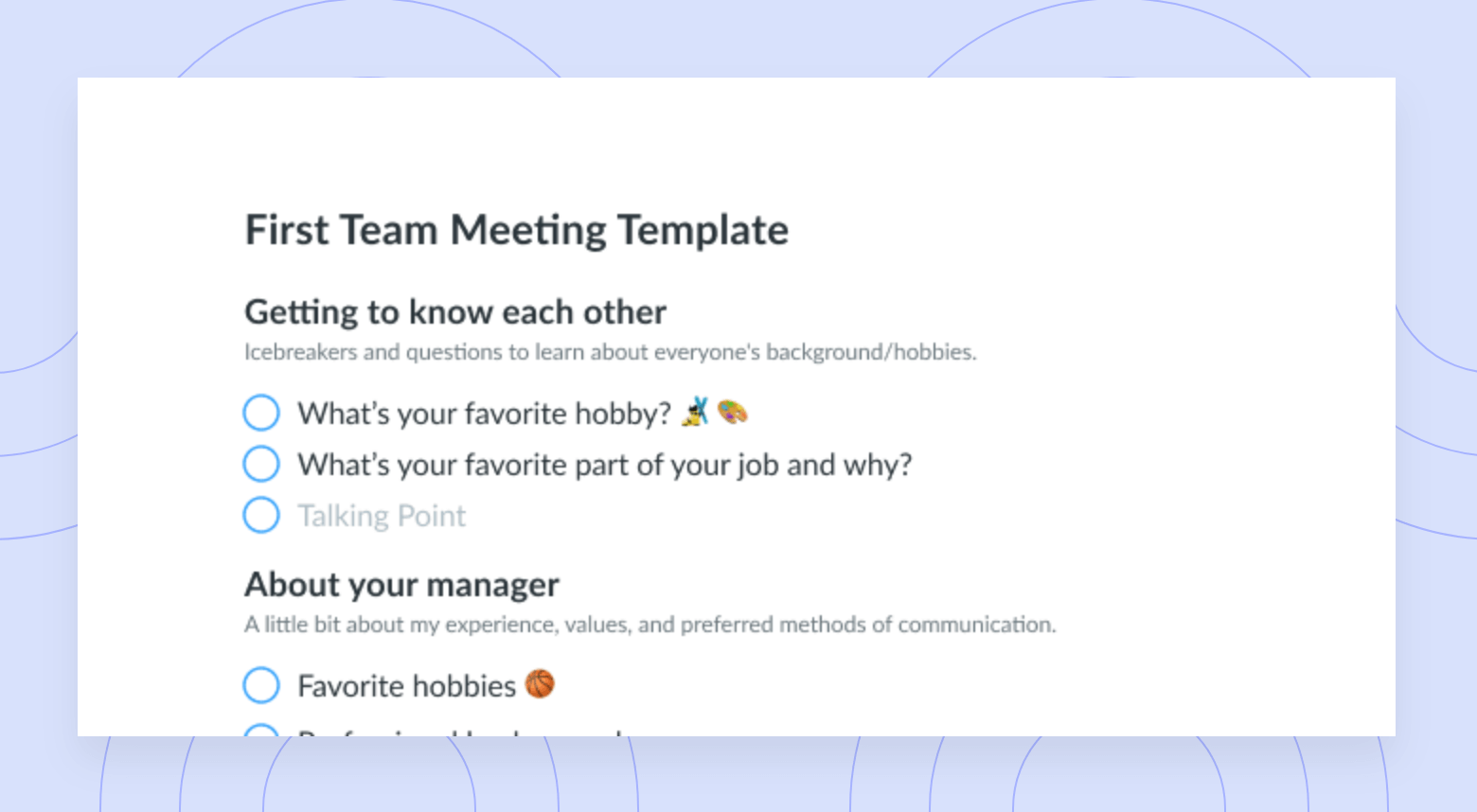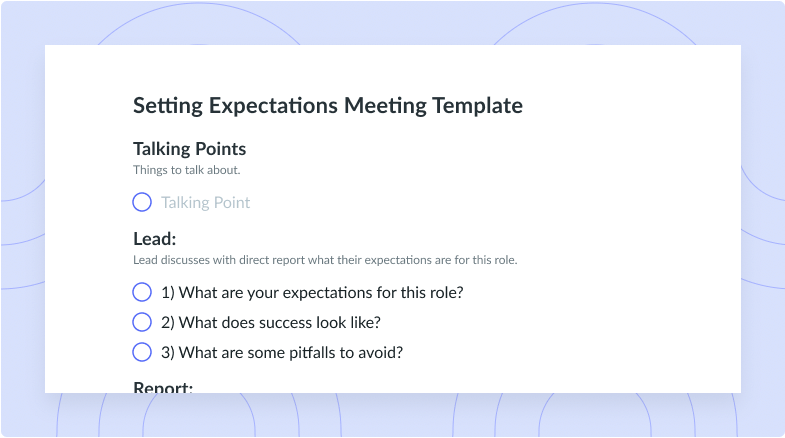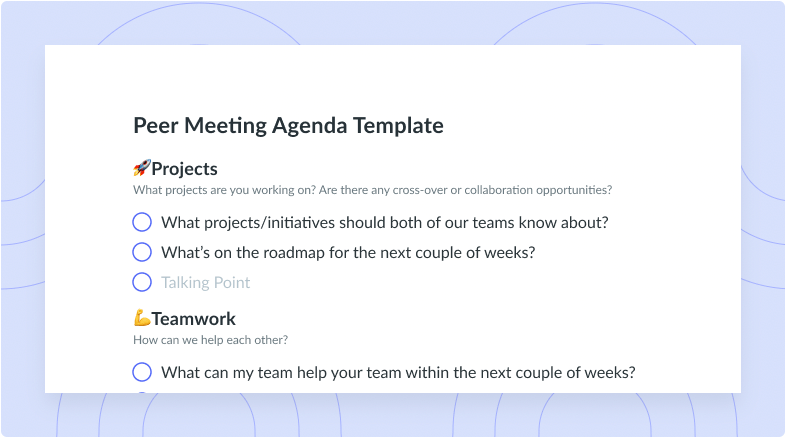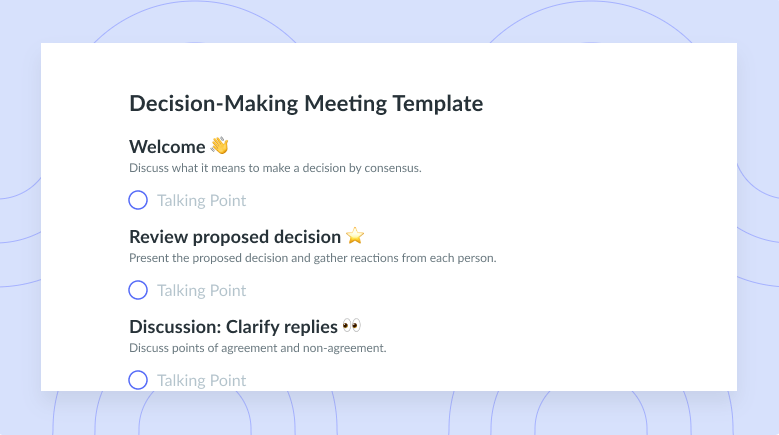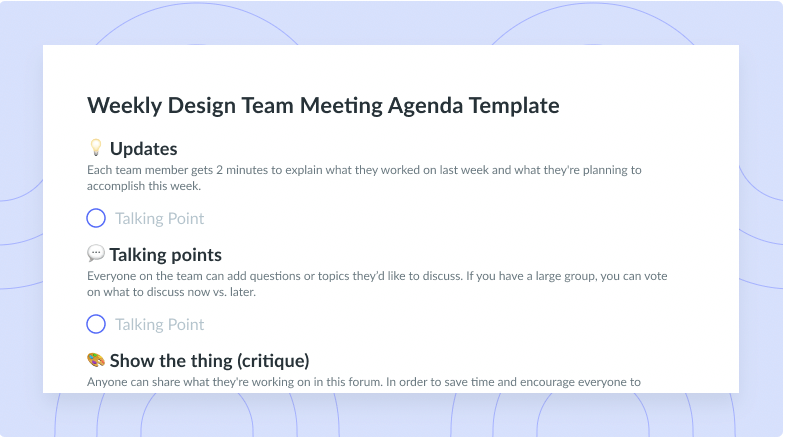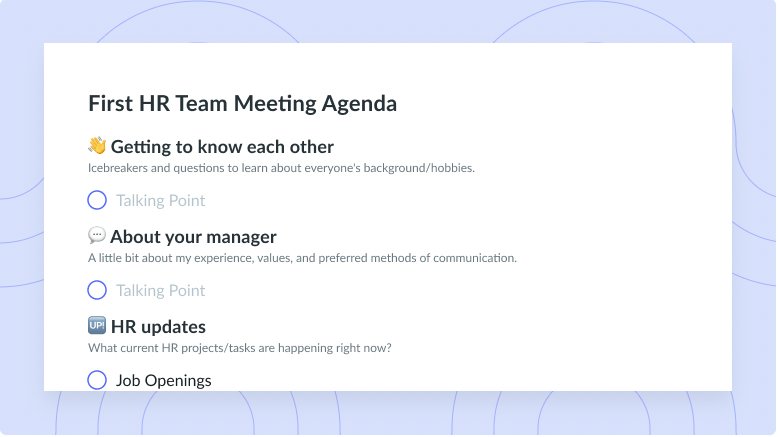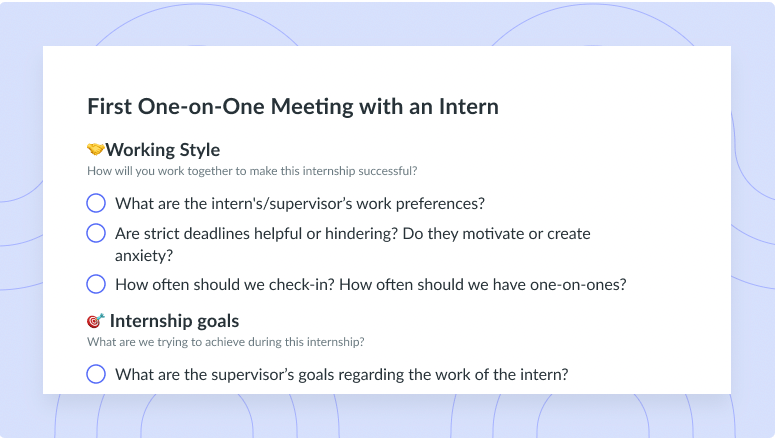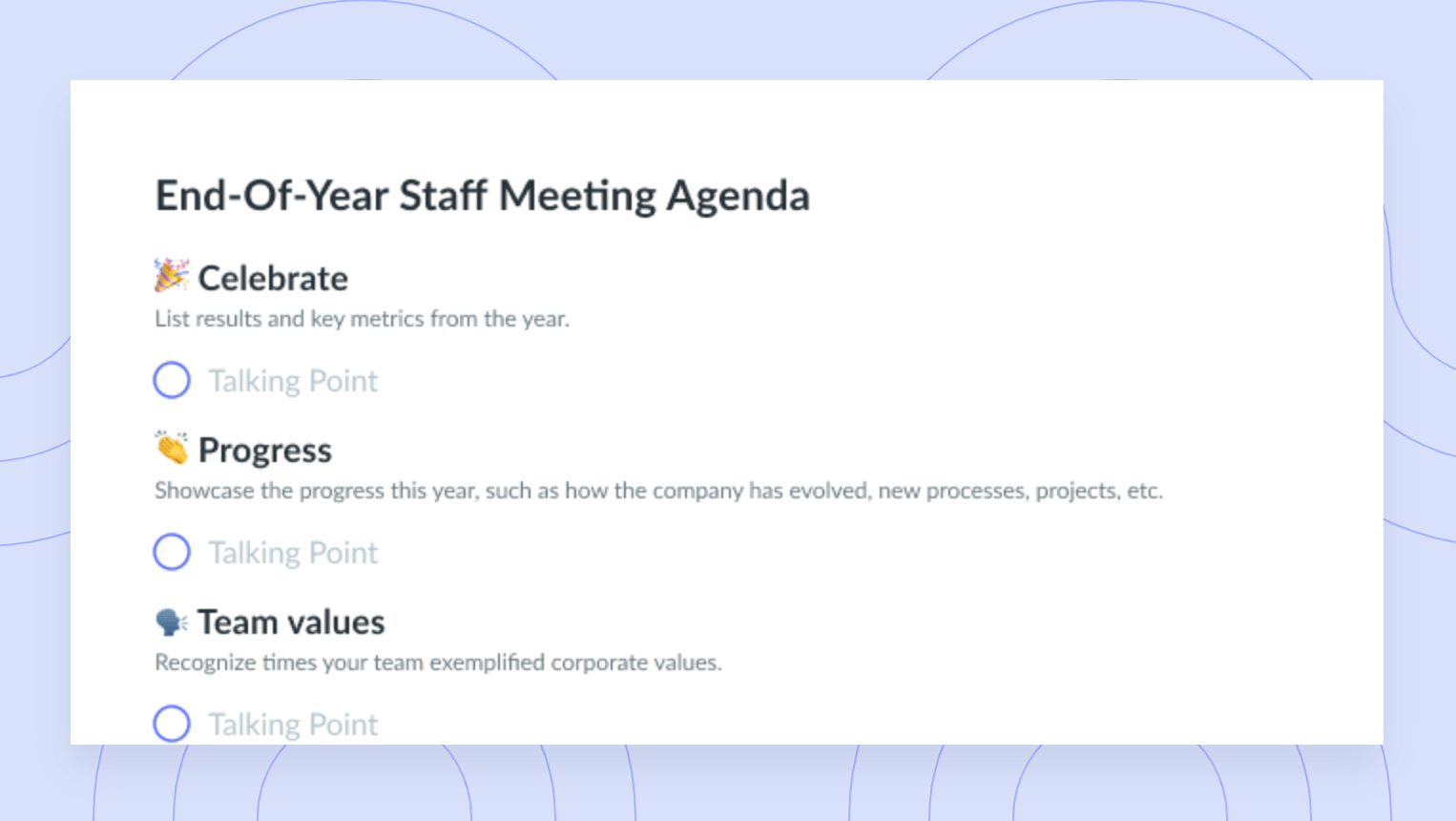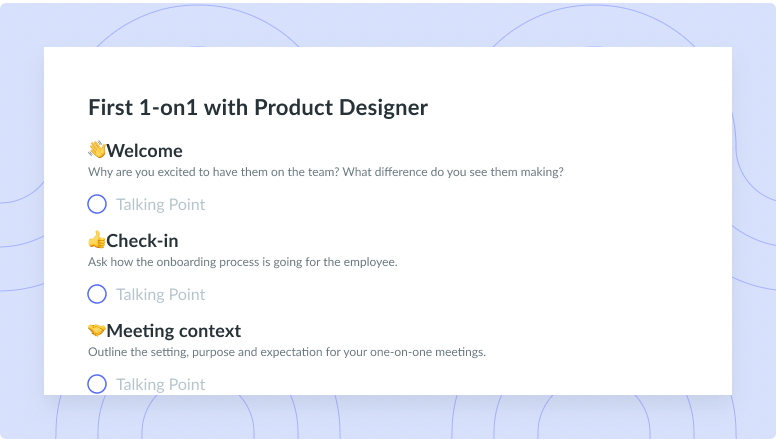How to Conduct Meetings in a Multigenerational Workplace
Follow these tips to result in more productive and successful meetings with a multigenerational team and create team alignment.
Today’s workforce consists of up to 5 different generations, each with its own set of expectations and workplace approaches. As a result, planning your meetings that makes everyone feel comfortable can seem like a challenge. However, enabling all team members to communicate and work together effectively is easier than you think.
Address Generational Assumptions
The five generations in the workforce today are:
- Traditionalists (Born before 1945)
- Baby Boomers (Born between 1946 and 1964)
- Generation X (Born between 1965 and 1976)
- Millennials (Born between 1977 and 1995)
- Generation Z (Born after 1996)
1 Traditionalists (Born before 1945)
Traditionalists prefer structure, stability, and face-to-face verbal communication in their work environment.
2 Baby Boomers (Born between 1946 and 1964)
Baby boomers often value working with others in person but prefer to use email for routine communication.
3 Generation X (Born between 1965 and 1976)
Generation X values the opportunity to work more independently and is willing to embrace new technology to boost productivity and enable communication.
4 Millennials (Born between 1977 and 1995)
Millennials often want to collaborate more regularly with their colleagues and engage with ideas through interaction and feedback. They generally prefer digital communication such as texting and instant messaging over other communication methods.
5 Generation Z (Born after 1996)
Generation Z prefers communication methods that are more personal and seek work environments that offer stability and flexibility in approach.
Many generalizations can be made about each generation and their approach to work. However, it isn’t helpful to focus too much on these, since every generation has diverse preferences and strategies. Any given individual is unlikely to conform to all or even many of the characteristics attributed to their age.
For instance, you shouldn’t assume that all older employees are uncomfortable with using digital communications like instant messaging. Similarly, being more familiar with these communication methods doesn’t mean that all younger employees dislike more direct and personal approaches.
While these generalizations may be a starting point for creating a more inclusive approach to conducting meetings, generational stereotypes can have the opposite effect. Unspoken assumptions about different generations can affect how ideas are discussed and valued. For example, these stereotypes can lead to a good idea not being taken seriously because of a perceived lack of experience, or constructive criticism of a new approach being dismissed as just resistance to change.

One source of truth
Having collaborative meeting notes allows you to have one source of truth of all the decisions made and action items assigned. Try using a tool like Fellow!

4 things to consider when conducting a multigenerational meeting
- Communicate preferences and expectations
- Build better relationships
- Don’t just cater to the majority
- Use a mix of presentation styles
1 Communicate preferences and expectations
Each generation entered the workforce with very different standards and expectations in terms of effective workplace communication and general conduct. Misunderstandings and a lack of clarity regarding how colleagues are expected to communicate can be a common source of friction in this area.
These potential conflicts can be easily avoided by setting clear standards and expectations, and by specifying which communication channel should be used for each task or scenario. The same principle applies to meetings. How you’re going to communicate should be part of the agenda for each meeting.
This approach allows meetings to cater to differing communication preferences with more ease.
For example, while some people prefer to learn by listening to a subject expert, others in the meeting may need to interact and ask questions to engage with the topic, and some may prefer to do things via email and skip meetings altogether. That’s why it’s vital in pre-meeting notes to explain which parts of the meeting will take place as an open, freeform discussion and which will be presented by a particular attendee. With Fellow, you can send the meeting agenda in advance so attendees can better prepare their talking points and get the chance to contribute to the discussion.
2 Build better relationships
Team building is a vital part of successfully managing a multigenerational team. The most straightforward way to prevent generational biases from impacting your teams or your meetings is to help people build better relationships with their colleagues. Team-building activities and icebreaker sessions can help attendees bond and understand each other as individuals instead of as generational stereotypes. Teams with better personal relationships will always find it easier to discuss ideas and collaborate on solutions without conflict.
3 Don’t just cater to the majority
Millennials currently make up more than half of the workforce. As a result, their preferences and values often influence the company and workplace culture, as well as the way meetings are conducted, more than other groups.
Other generations may feel pressured to conform to the values and expectations of their millennial colleagues, and may have less of a desire to contribute as a result. In fact, 33% of people are worried that their age puts their job at risk. Accommodating a more diverse range of preferences and communication styles is beneficial for any team, not just a multigenerational one. For example, while most millenials are happy to have important discussions and make decisions via instant messaging, others need to talk face-to-face to feel confident in a decision.
4 Use a mix of presentation styles
People engage with ideas and information differently, especially across generations.
While some employees value group discussions and activities to learn about a topic, other colleagues may see this approach as a waste of time when they could be hearing a lecture or presentation from the experts. No single approach is best, so using a mix of methods to structure your meetings allows everyone to engage.
The best practice here would be to have a discussion with each team member to learn their meeting conduct and decision-making preferences so you can implement them in meetings. However, catering to everyone’s preferences may not always be possible, depending on the meeting in question.
Besides helping team leaders tailor their meeting style to their team’s preferences, using a mix of presentation styles also provides an excellent opportunity for team leaders and managers to explain the benefits of other approaches. As a result, meeting attendees can better appreciate the value of different communication styles.
Conclusion
Every team member has their own preferred communication style and approach for meetings. While some attendees will make their best contributions as part of a clearly structured meeting agenda, others perform at their best during open, freeform discussions. Effective multigenerational meetings take these varying preferences into consideration and find a successful compromise to meet the needs of everyone involved. By doing this, you can establish an approach to meetings that enables everyone to put forward their ideas.
Overall, workplace culture plays an essential part in how people feel able to contribute to discussions, meaning that relationship building is vital to conducting meetings smoothly. Finding a balance of these elements will result in more productive and successful meetings with a multigenerational team.


![How to Conduct a Successful Listening Tour [+ Example Questions]](https://fellow.app/wp-content/uploads/2022/03/listening-tour.jpg)






